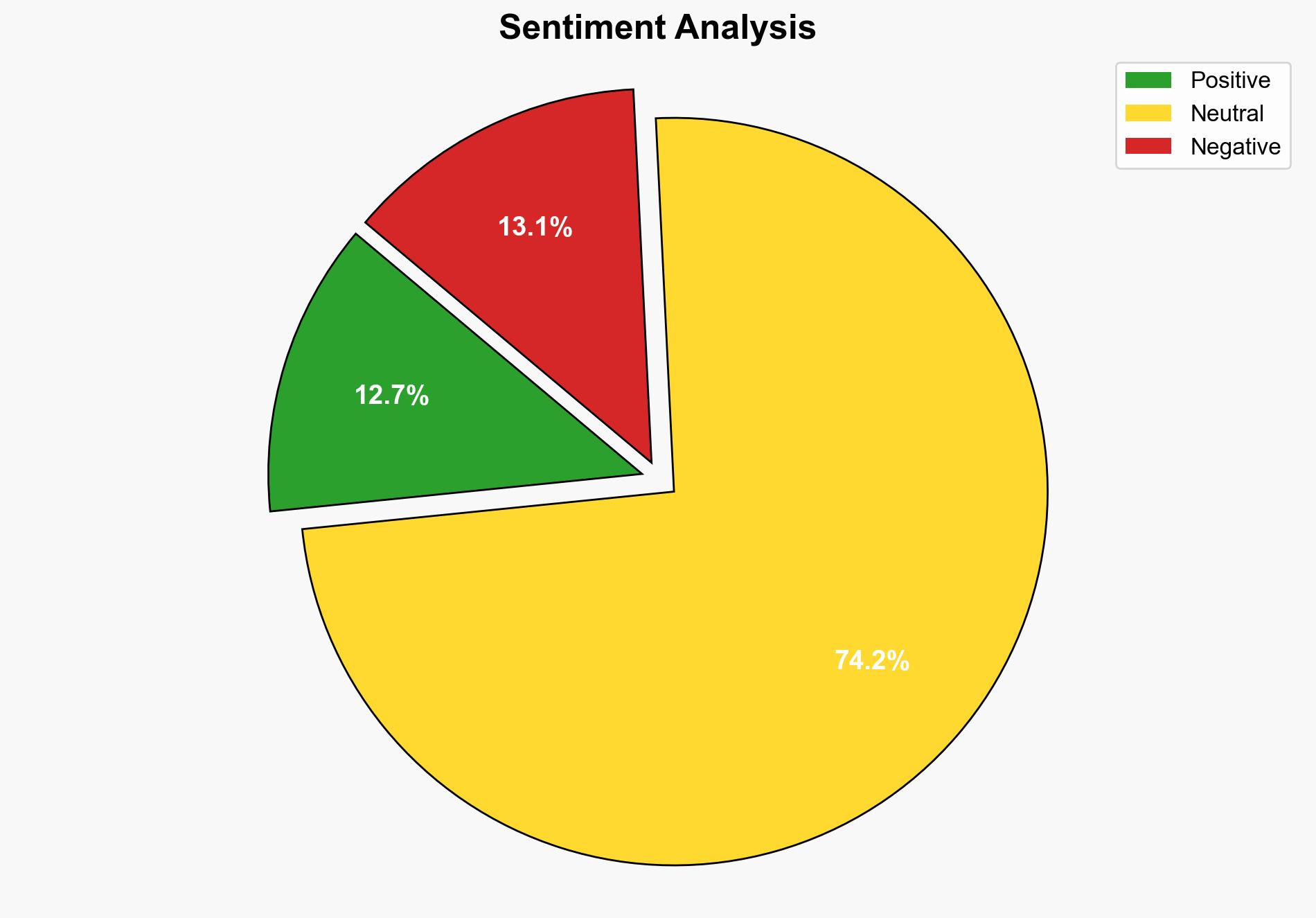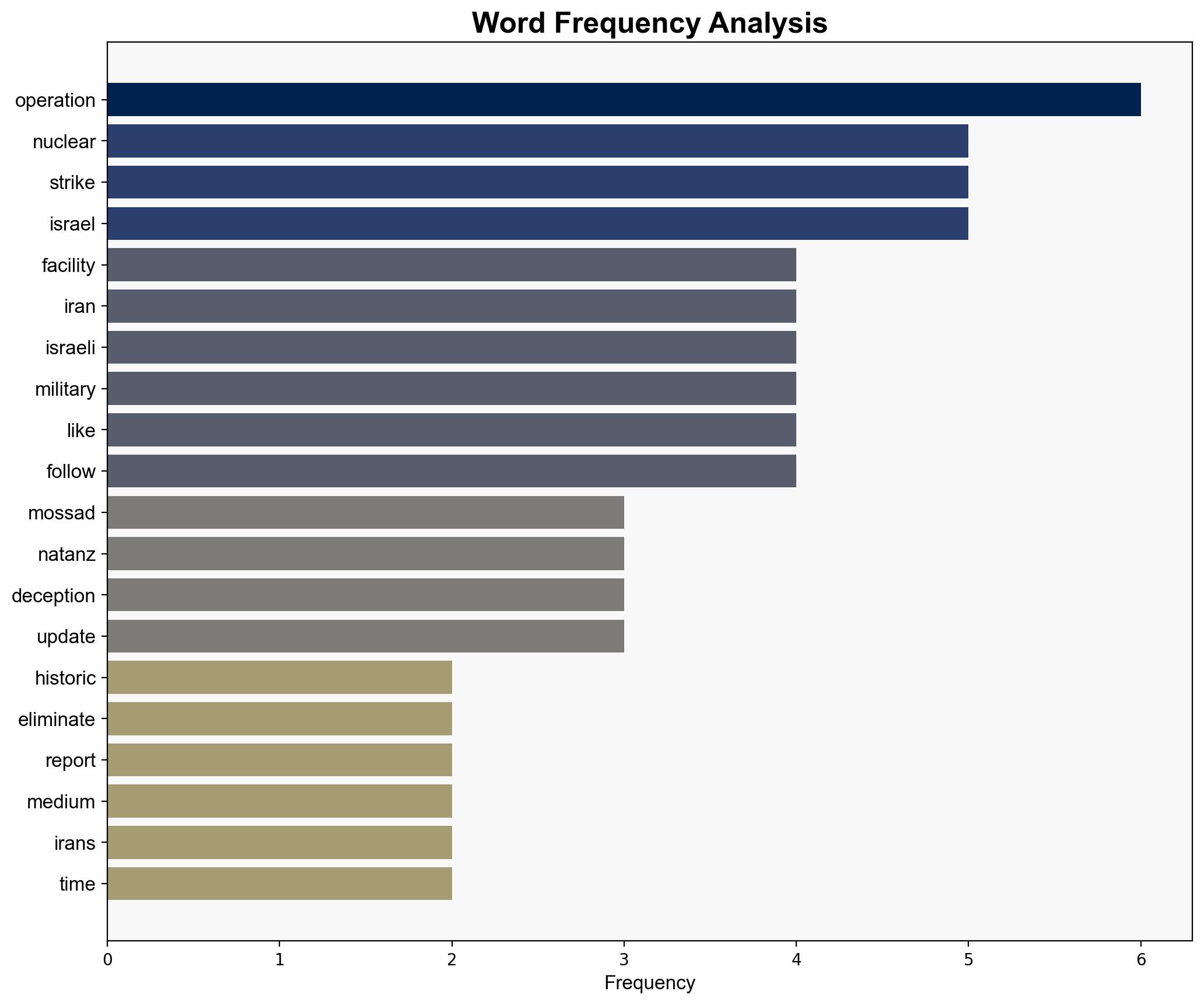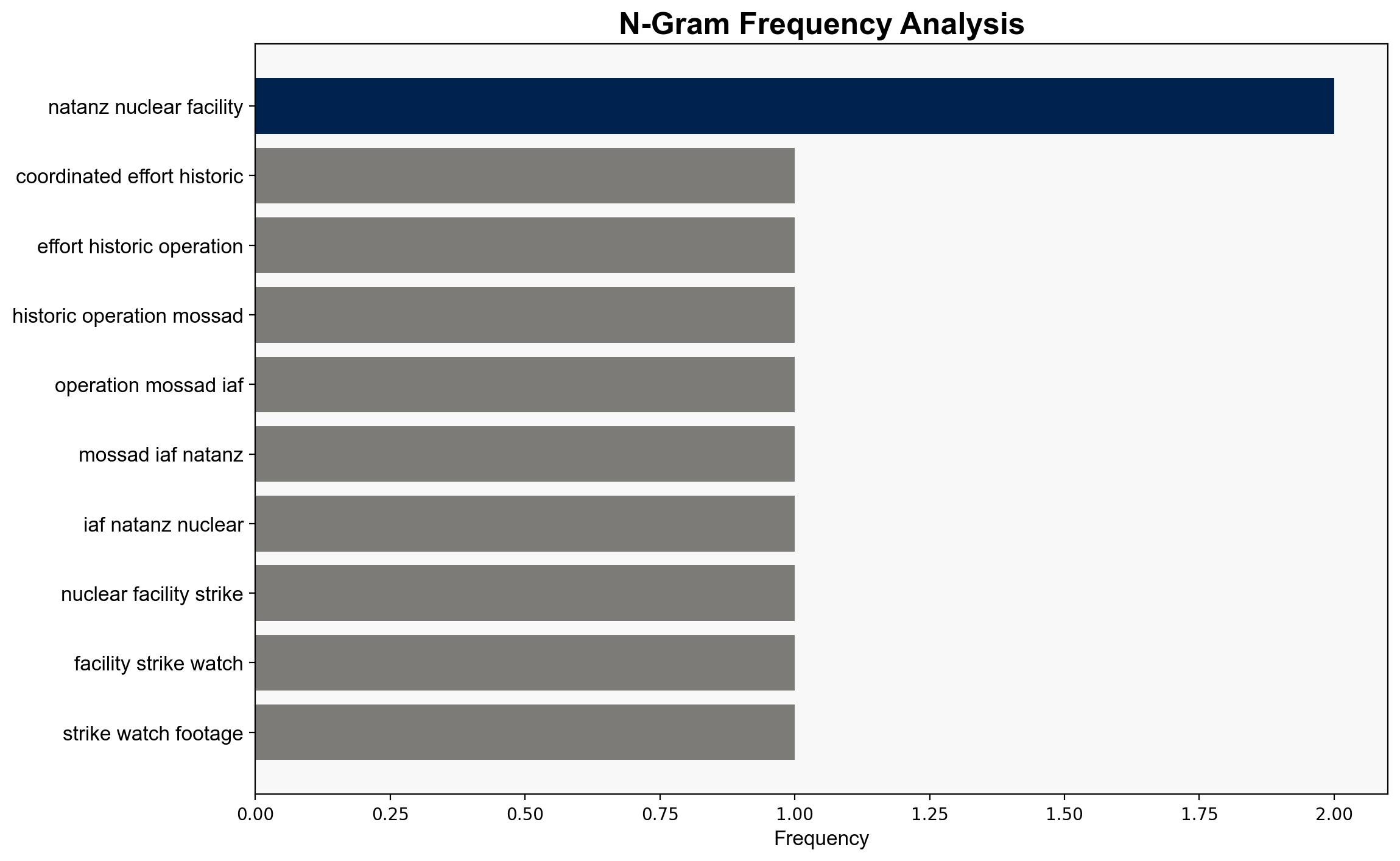Natanz Nuclear Facility Struck Developing – Jfeed.com
Published on: 2025-06-13
Intelligence Report: Natanz Nuclear Facility Struck Developing – Jfeed.com
1. BLUF (Bottom Line Up Front)
The recent strike on Iran’s Natanz nuclear facility represents a significant escalation in Israeli-Iranian tensions. This operation, reportedly involving Mossad and the Israeli Air Force, demonstrates a high level of coordination and strategic deception. The attack’s success could potentially destabilize regional security dynamics and trigger retaliatory measures from Iran. Immediate attention is required to assess the geopolitical ramifications and prepare for potential escalation.
2. Detailed Analysis
The following structured analytic techniques have been applied to ensure methodological consistency:
Cognitive Bias Stress Test
The analysis has been subjected to red teaming to challenge assumptions and identify potential biases. The operation’s success was initially underestimated due to public speculation and diplomatic engagements that served as a smokescreen.
Bayesian Scenario Modeling
Probabilistic forecasting indicates a high likelihood of further Israeli-Iranian confrontations. The probability of Iranian retaliation is significant, with potential targets including Israeli interests abroad.
Network Influence Mapping
The operation involved complex coordination between Israeli intelligence and military forces. The influence of key Israeli figures in orchestrating the strike suggests a robust network capable of executing high-stakes operations.
3. Implications and Strategic Risks
The strike on Natanz could lead to increased military tensions in the Middle East, impacting global oil markets and international diplomatic efforts. The potential for cyber retaliation by Iran poses a significant threat to critical infrastructure. Additionally, the operation may embolden other regional actors to pursue aggressive strategies.
4. Recommendations and Outlook
- Enhance intelligence-sharing mechanisms with regional allies to monitor potential Iranian responses.
- Prepare contingency plans for cyber defense to protect critical infrastructure from potential Iranian cyberattacks.
- Engage in diplomatic efforts to de-escalate tensions and encourage dialogue between involved parties.
- Scenario-based projections:
- Best Case: Diplomatic interventions lead to a de-escalation of tensions.
- Worst Case: Full-scale military conflict erupts, destabilizing the region further.
- Most Likely: Continued low-intensity skirmishes and cyber exchanges.
5. Key Individuals and Entities
Benjamin Netanyahu, Javier Milei, Donald Trump
6. Thematic Tags
national security threats, cybersecurity, counter-terrorism, regional focus




